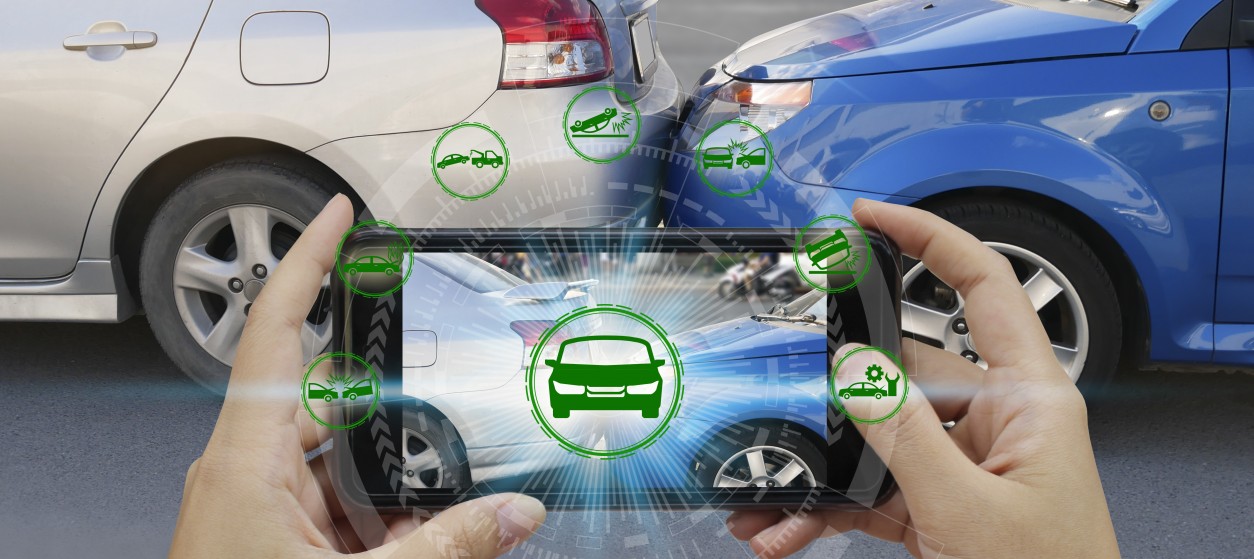For over a decade, enterprises are heavily investing in their digital transformation. These investments enable them to generate, collect and manage a proliferating amount of data points, leveraging state of the art cloud and big data infrastructures. At the same time, recent advances in hardware platforms and compute capacity facilitate the processing of large volumes of information by means of advanced analytics algorithms like Machine Learning (ML) and Artificial Intelligence (AI). In several cases, distributed systems and decentralized architectures are used to enhance the data collection processes, while novel analytics engines are exploited to derive real-time business insights. Overall, the unprecedented technology acceleration is disrupting entire sectors of the economy.
The insurance industry is no exception to this disruption rule. Digital technology trends are set to transform the very nature of insurance, as they enable insurers to do things better and to offer exceptional quality of service to their customers. State of the art insurance services take advantage of real-time datasets, highly automated digital processes, distributed data collection and processing of data sets from multiple sources, as well as of cutting-edge ML and AI technologies. Moreover, the integration of the above-listed systems and technologies in the cloud, enables insurance companies to launch new on-demand products and to provide scalable customer service. The sector is also disrupted by Insurance Technology (Insurtech) companies i.e. high-tech startups that leverage digital technology to provide innovative insurance products and services.
There are tens of disruptive applications in the insurance sector, including front-office, middle office and back-office applications. Most of these applications can be clustered in few categories, which are defined by the technologies that enable and drive their evolution.
Trend #1: Predictive Analytics and Machine Learning
Many novel applications take advantage of predictive analytics and machine learning to provide unique insights that enable insurers improve their decisions. For instance, predictive analytics help insurers to identify customers that consider cancellation of their services, which is a key to reducing churn rates. Similarly, predictive analytics techniques can unveil future market trends to boost insurers’ ability to anticipate market demand. Likewise, machine learning systems provide insights in potentially fraudulent claims, while helping insurance companies spot outlier claims that must be scrutinized. Most importantly, machine learning models can be used to automate the processing of claims, which saves significant effort and costs. Specifically, ML techniques provide an automation and speed advantage in the processing of thousands of insurance transactions (e.g., claims, payments).
Trend #2: Chatbots and AI for Personalized Customer Service
Chatbots are a special case of AI applications in insurance. They are disrupting the front office of insurance enterprises, by interacting with the customer and obviating the need for customer service agents. This is a foundation for more scalable and cost-effective customer service desks. The front office of insurance enterprises also uses AI agents that personalize offerings and interactions to the customers’ needs. In this direction, insurance enterprises collect and process large volumes of data from each customer’s interactions with the insurance company, as well as other behavioral data.
Trend #3: Internet-of-Things for Usage Based Insurance
Nowadays, the internet of things (IoT) paradigm enables enterprises to collect information about insured assets and customer behavior. This is particularly relevant for the insurance sector, where data from internet connected devices are used to personalize the calculation of premiums and to improve the value for money offered to the customers. Here are three of the most prominent IoT-based insurance applications:
- Pay-as-You Drive Vehicle Insurance: IoT sensors in modern connected cars enable the collection of a wealth of information about the drivers’ behavior. The latter can drive the calculation of premiums in ways that reward careful drivers and incentivize customers to drive safely.
- Personalized Healthcare Insurance: Smartphones and IoT sensors like fitbits and other wearables are used to provide information about the customers’ lifestyle, such as fitness and exercise information. With such information at hand, insurance companies can offer reduced healthcare insurance premiums to customers that maintain a healthy lifestyle.
- Home Insurance in smart spaces: Smart home sensors provide a wealth of information about how a residency is used and maintained by its tenants. Insurers use such information to boost responsible tenants’ behaviors i.e. behaviors that boost sustainability and minimize risks for fire and other adverse events.
As evident in the above examples, IoT enables a radical shift from conventional “one-size-fits-all” premiums, to personalized, usage-based insurance that aims at improving customer services and boosting behaviors that minimize risk.
Trend #4: Blockchains for Fast Insurance Underwriting
Distributed ledger technologies, most commonly known as blockchains, enable novel decentralized applications that are characterized by strong security and trust. They are the foundation for providing financial services without a bank, as in the case of blockbuster cryptocurrencies like Bitcoin and Ethereum. The decentralized computing paradigm of blockchains can be also applied in insurance use cases. For instance, it can boost decentralized claims processing in ways that ensure the consensus of all parties involved in an insurance service (e.g., the insurer and the parties involved in a car accident). Likewise, the placing of claims data in a blockchain increases the security and reliability of the process, thanks to the tampered proof properties of the blockchain. Furthermore, processing time is significantly reduced, not only due to automation, but also due to the acceleration of the consents’ management process.
Trend #5: Unmanned Aerial Vehicles for Real-Estate and “Agroinsurance”
Insuring farms and other agricultural real-estate assets have been always a challenge, simply because insurance companies lack credible baselines for calculating premiums. Farms tend to be situated in different locations that makes them hardly comparable, while sometimes spanning very large areas with diverse characteristics. Technology can provide a remedy to this challenge. Specifically, Unmanned Aerial Vehicles (UAVs) can be used to collect data about a farm to enhance the credibility of the risk assessment processes. These data can be combined with other real-world datasets such as weather data (e.g., temperature, humidity) to increase the accuracy of the calculations. In several cases, climatic parameters based on the processing of Earth Observation data are considered as well. The consideration of such climatic parameters will be one of the most important insurance trends in the years to come. This is due to the on-going climate change that puts long term insurance contacts at risk. It is particularly important in cases of real estate assets (e.g., land, buildings, homes) that might suffer damages due to unusual climatic events.
Trend #6: Alternative Data in Insurance: Open Source and Social Media Data
Like in any other industry, social media play a major role in the insurance market. They are used as a primary channel for marketing and promoting insurance products. Nevertheless, in the case of the insurance sector, social media data are also used to boost the accuracy of risk assessments for companies and physical persons. Specifically, the analysis of social media information can unveil unique insights about the customers’ wealth, spending habits and consumer behavior. The latter can be combined with conventional customer data records (e.g., data derived during the insurance KYC (Know Your Customer) process) to boost the accuracy and depth of risk assessments. Likewise, they can enable the creation of intelligent advertisements. For instance, once detecting the birth of a new kid, insurance enterprises could provide his/her parents with targeted advertisements of relevant insurance products.
Digital technology is set to transform multiple aspects of the insurance market. Insurance technology provides a host of innovation opportunities that could set insurance companies apart from their competitors. Hence, insurers have no other option than keeping an eye on the above-listed technology trends and on the use cases that they enable.










